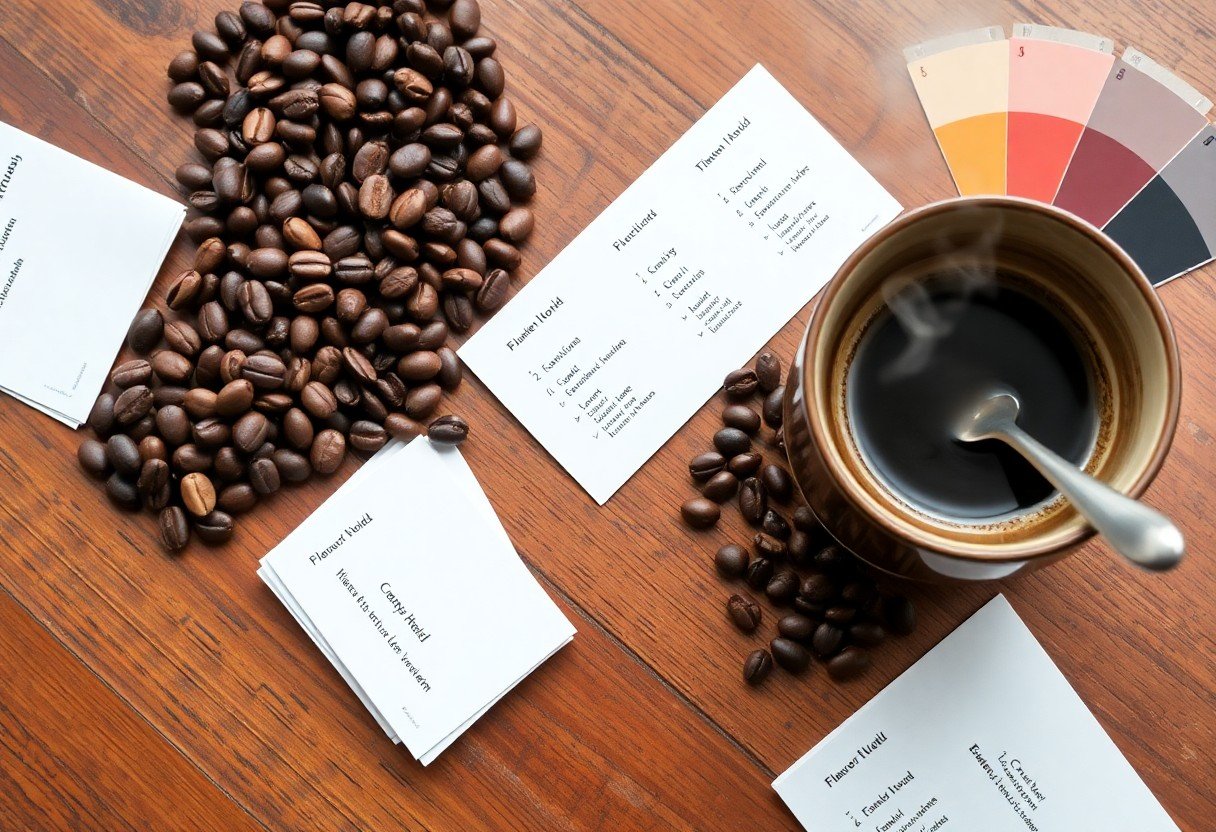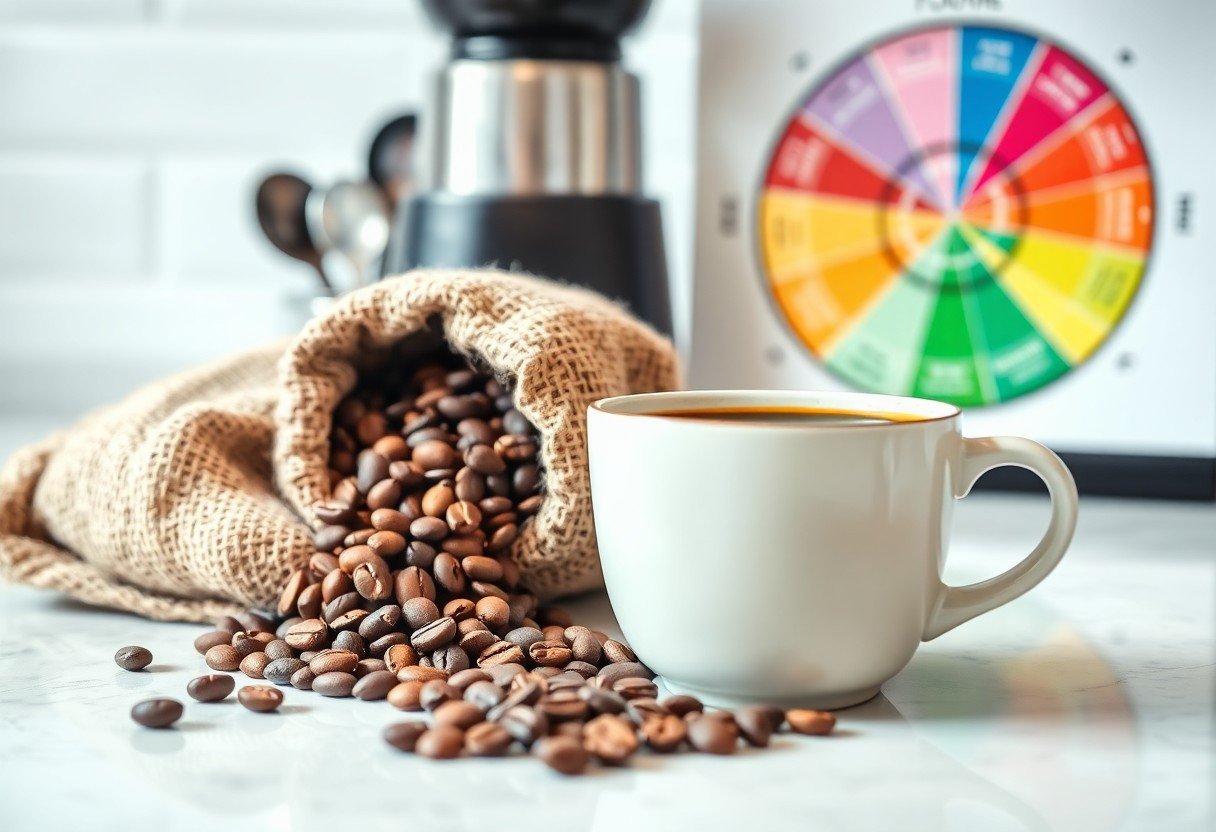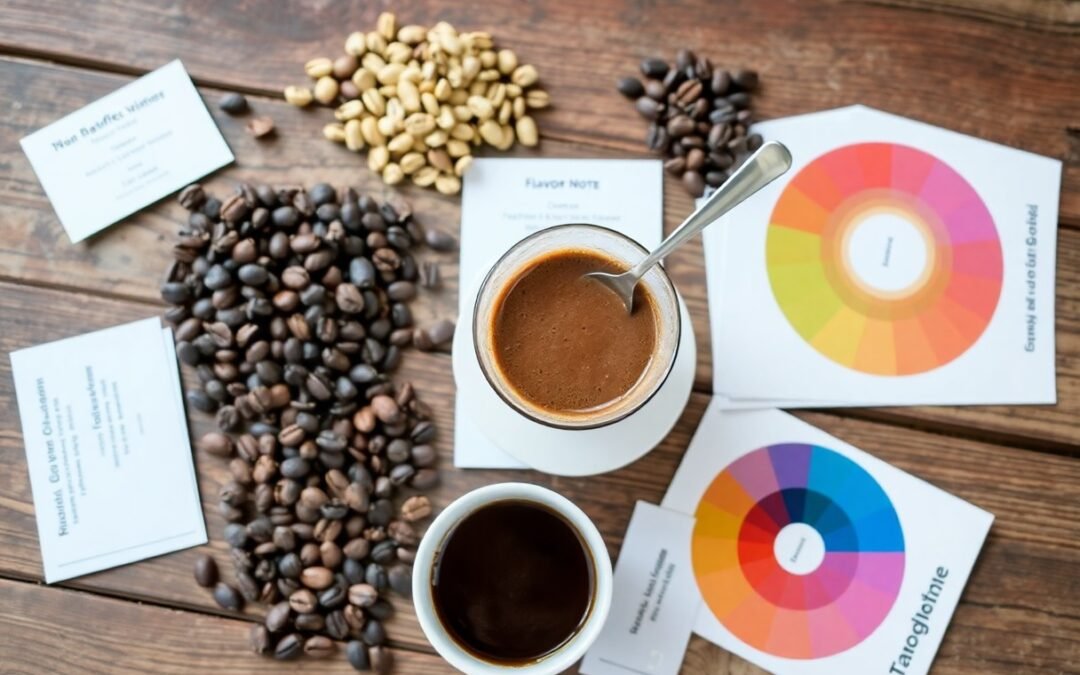Just as with fine wine, appreciating artisan coffee requires a deep explore its flavor profiles using your senses. By honing your ability to taste, smell, and even feel the textures of different brews, you can unlock the rich complexities of each cup. This guide will empower you to confidently evaluate vibrant coffee flavors, helping you to discern the subtleties that make each variety unique. Engage your senses and elevate your coffee experience to new heights.
The Art of Aroma: Identifying Coffee Scents
Aroma plays a pivotal role in the coffee tasting experience, revealing a wide spectrum of flavors before even taking a sip. Each coffee variety carries its own unique scent profile, often influenced by factors such as the region of origin, processing methods, and roast level. Discovering these aromas heightens your overall appreciation and guides you toward finding your preferred flavor notes, enhancing the pleasure of every brewing session.
Key Aromatic Components of Coffee
Techniques for Capturing and Assessing Aroma
In addition to swirling and covering, consider utilizing cupping methods commonly employed by coffee professionals. By tasting several coffees side by side, you can compare their aromatic profiles more effectively. This method not only sharpens your senses but also aids in developing your vocabulary around coffee scents, making it easier to articulate what you experience. Investing time in these practices will deepen your understanding and enjoyment of each cup you brew.

The Language of Taste: Decoding Flavor Notes
Understanding the terminology of coffee flavors enhances your tasting experience. Developing an enriched vocabulary allows you to articulate what you perceive. You’ll come to recognize distinct notes like floral, nutty, or chocolatey, and differentiate them within complex profiles. Utilizing detailed descriptions helps you articulate your preferences and share insights with others, creating a more interactive coffee journey.
Primary Flavor Categories: Sweet, Sour, Bitter, and Umami
Each coffee possesses foundational flavor categories: sweet, sour, bitter, and umami. Sweetness typically indicates the quality of the coffee bean and its ripeness, while sourness may suggest a bright acidity, offering lively and refreshing notes. Bitterness, often associated with darker roasts, can impart depth, while umami enriches the experience by introducing savory characteristics, such as those found in certain Indonesian coffees.
Recognizing Nuances: From Fruity to Earthy
Delving into the nuances of coffee flavors reveals a broad spectrum that transcends basic categories. Fruity profiles can range from bright citrus to rich berries, while earthy notes evoke the essence of soil or herbs. By honing your palate, you’ll identify these subtleties, recognizing how different brewing methods and origins influence flavor variations, adding depth to your coffee experience.
Exploring the flavor nuances allows you to appreciate the complexity of different coffee beans. For instance, an Ethiopian Yirgacheffe may present vibrant notes of blueberry and jasmine, while a Sumatran coffee often leans towards earthy, herbal undertones. Taking the time to savor these distinctions enhances your sensory experience and enables you to make informed selections based on your preferences. Embrace the variety, as each cup can transport you to different regions—highlighting the artistry behind every roast.
Sensory Strategies: Enhancing Your Tasting Experience
Elevating your tasting experience involves engaging all your senses. Start by creating a conducive environment free from distractions, allowing you to focus entirely on the coffee. Pay attention to the coffee’s appearance, assessing the color and clarity, and observe beans or grounds in natural light. As you brew, note the aroma released, and savor the first sip, being mindful of the coffee’s texture and temperature on your palate. Each sense plays a vital role, enhancing both enjoyment and understanding of the coffee’s complexity.
Preparing Your Palate: Best Practices
Before tasting, cleanse your palate with water or a neutral snack, like plain crackers. This step clears lingering flavors from your mouth, ensuring that the unique notes of your coffee stand out. Take a moment to breathe deeply, allowing the aroma to fill your senses. You might also want to avoid strong foods or fragrances prior to your tasting session, as these can significantly alter your perception of flavors and aromas.
Using Tasting Tools: Cups, Spoons, and Filters
Using the right tools enhances your coffee tasting experience significantly. Invest in small, unglazed ceramic cupping cups, which prevent interference with taste and aroma. Stainless steel spoons with a shallow bowl are ideal for sampling as they allow for a proper slurp, helping to aerate the coffee on your palate. Additionally, prefer filters designed for clarity, like paper or metal mesh, to ensure your brew maintains its unique attributes without imparting unwanted flavors.
For optimal tasting, choose cups that minimize heat loss so you can appreciate the full spectrum of flavors. A smaller volume cup also reduces the amount of coffee to sip, making it easier to evaluate your brew systematically. Stainless steel spoons not only facilitate easy sampling but also provide a neutral surface, preventing any metallic taste. Quality filters, specifically designed for your brewing method, ensure that undesirable oils and sediment do not interfere with the clarity and purity of the coffee’s flavor profile, allowing you to fully experience every nuanced note.
Unveiling Texture: The Role of Mouthfeel in Flavor
Mouthfeel significantly influences your coffee drinking experience, contributing to how flavors are perceived. A coffee with a creamy, rich mouthfeel can enhance the sensation of sweetness or complexity, while a watery texture may dilute its vibrancy. Pay attention to how the coffee coats your tongue and the sensations that linger after each sip; these nuances offer insight into the roast’s quality and origins.
Understanding Viscosity and Body
Viscosity and body define the thickness and weight of the coffee you sip. A full-bodied coffee, such as an espresso or dark roast, often delivers a syrupy sensation, while lighter brews offer crispness. You can evaluate these qualities by letting the coffee linger on your palate, allowing the unique characteristics of each type to emerge.
Connecting Mouthfeel to Overall Enjoyment
The mouthfeel of your coffee can amplify or detract from your overall perception of flavor. A well-rounded mouthfeel enhances sweetness, acidity, and bitterness, harmonizing them for a more enjoyable experience. On the contrary, a thin mouthfeel might make vibrant flavors seem muted. Reflect on how different textures have previously influenced your coffee enjoyment to refine your palate.
Engaging with mouthfeel allows you to connect emotionally with your coffee. For example, a velvety texture may evoke feelings of comfort, while the bright, sparkling mouthfeel of a light roast can elicit excitement. As you evaluate different coffees, consider how these textural elements resonate with your preferences, influencing not just flavor but your overall satisfaction with each cup. Pairing mouthfeel with flavor notes can transform a simple experience into a sensory journey, making each tasting session memorable.

From Personal Preference to Expert Evaluation
Your journey from a casual coffee drinker to an informed connoisseur unfolds as you deepen your understanding of flavor profiles. This process involves recognizing your own preferences and systematically evaluating coffee nuances. By exploring various beans, roasts, and brewing methods, you enhance your ability to identify distinct flavors, aromas, and textures. With practice, you can shift your viewpoint from subjective enjoyment to informed analysis, employing a more structured tasting approach that sharpens your appreciation for the diverse world of artisan coffee.
Developing Your Unique Flavor Profile Preferences
Molding your unique flavor profile preferences is a personal journey that unfolds with each sip. Start by experimenting with different coffee origins, roast levels, and brewing techniques; take notes on your findings. As you engage with various flavor notes—like fruity acidity or earthy undertones—you’ll begin to understand what pleases your palate. Over time, this self-awareness will strengthen your ability to discern quality coffees and articulate your choices with confidence.
Tips for Engaging in Coffee Tasting Events
Participating in coffee tasting events can significantly enhance your flavor evaluation skills. Prioritize these experiences by coming prepared with an open mind and a curious palate. Engage actively with participants and experts, asking questions about the coffees and their characteristics. Focus on the sensations within your mouth and jot down observations to refine your understanding. Consider common flavor descriptors to communicate your insights effectively.
- Arrive with an eager mindset to explore new coffee varieties.
- Bring along a notepad to record impressions and preferences.
- Engage with other attendees to share insights and learn from different perspectives.
- Be open to tasting and appreciating flavors outside your usual preferences.
- Any opportunity to taste with others can provide invaluable insights.
During coffee tasting events, take advantage of guided tastings that may highlight specific flavor notes or brewing techniques. Pay attention to the advice of experts, who often share tips on identifying subtleties in flavor. Explore variations between different brewing methods and how they alter taste perception. Seek feedback from fellow tasters to refine your palate and learn to articulate your experiences. Any experience gained at such events helps build a more discerning palate.
- Follow a structured tasting method like the cupping technique to compare coffees effectively.
- Allow coffee to cool slightly before tasting to better identify flavors.
- Consider the full sensory experience—smell, taste, and mouthfeel.
- Explore complementary pairings with food to enrich your tasting experience.
- Any new encounter can broaden your coffee knowledge and elevate your tasting repertoire.
Final Words
Conclusively, to evaluate vibrant artisan coffee flavor profiles effectively, you should engage all your senses. Focus on the aroma, texture, acidity, and aftertaste while sipping. Observe how these elements interact to create a unique experience. By refining your palate and developing your sensory awareness, you can better appreciate the complexities and nuances of each cup. This hands-on approach not only enhances your brewing skills but also deepens your connection to the craft of coffee.
FAQ
Q: What are the primary sensory components to evaluate in coffee flavor profiles?
A: The primary sensory components to evaluate include aroma, acidity, sweetness, body, and aftertaste. Aroma can be assessed by inhaling the scent of brewed coffee. Acidity refers to the brightness or sharpness of the flavor. Sweetness balances bitterness, while body describes the weight and texture of the coffee on the palate. Aftertaste is the lingering flavor experienced after swallowing.
Q: How does aroma contribute to the evaluation of coffee?
A: Aroma plays a significant role in flavor perception. It can convey a variety of notes such as floral, fruity, nutty, or spicy. To evaluate aroma effectively, sniff the coffee before and after brewing, identifying distinct characteristics that help define the overall flavor profile.
Q: In what ways can the acidity of coffee be assessed?
A: Acidity can be assessed by taking small sips, allowing the coffee to reach different areas of the palate. A bright acidity often enhances the flavor profile, providing a lively experience. Note whether the acidity feels crisp or mellow and how it complements or contrasts with other flavors.
Q: What techniques can enhance the detection of sweetness in coffee?
A: To enhance the detection of sweetness, focus on the coffee’s initial taste. Pay attention to how the flavors develop as they linger on the palate. Sweetness can often be sensed alongside or following acidity, creating a harmonious balance that enriches the overall experience.
Q: Why is aftertaste important in evaluating coffee?
A: Aftertaste, or finish, is important as it affects the lasting impression of the coffee. It reveals the complexity of flavors and can indicate quality. A desirable aftertaste should feel pleasant and evocative, extending the enjoyment of a well-brewed cup.

